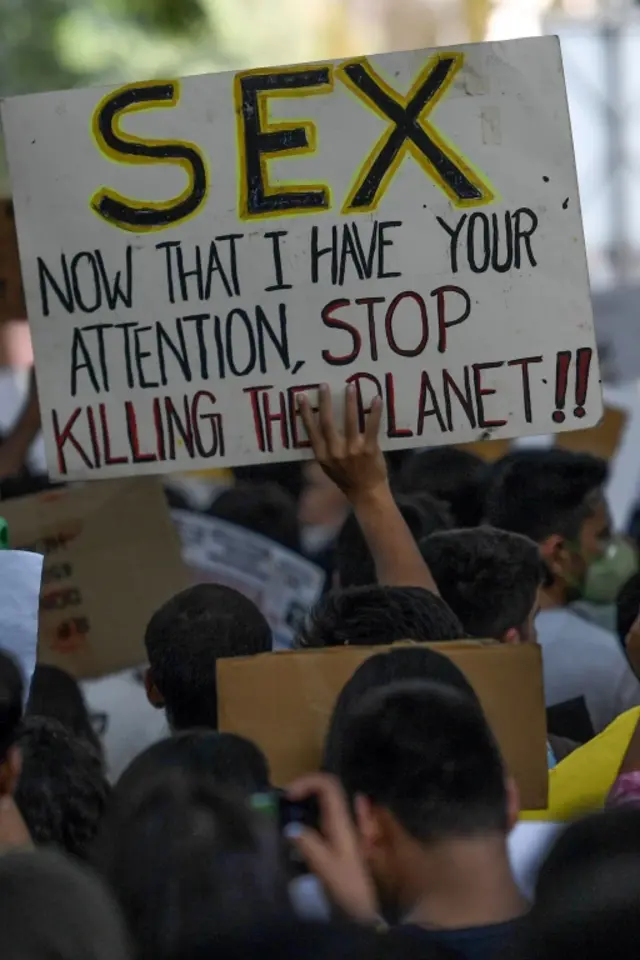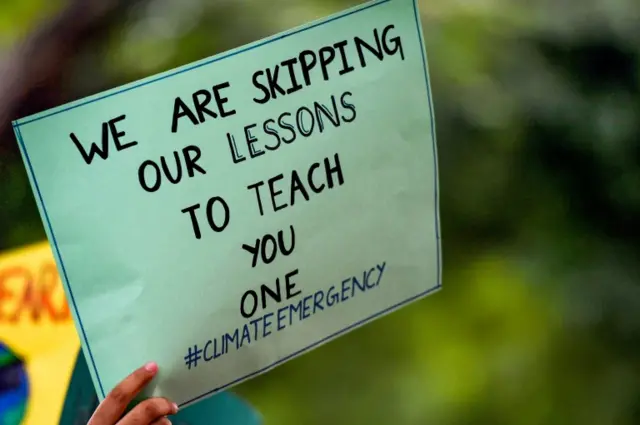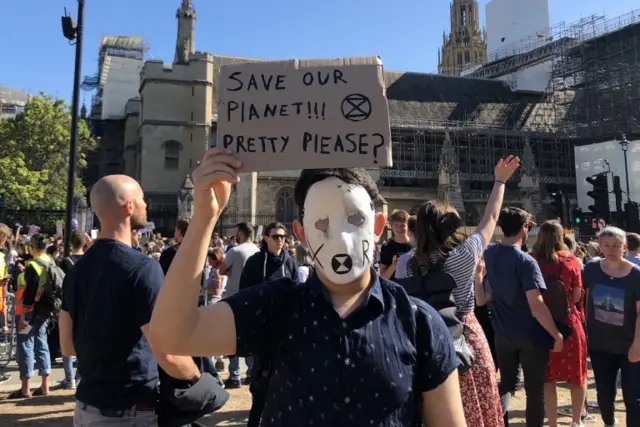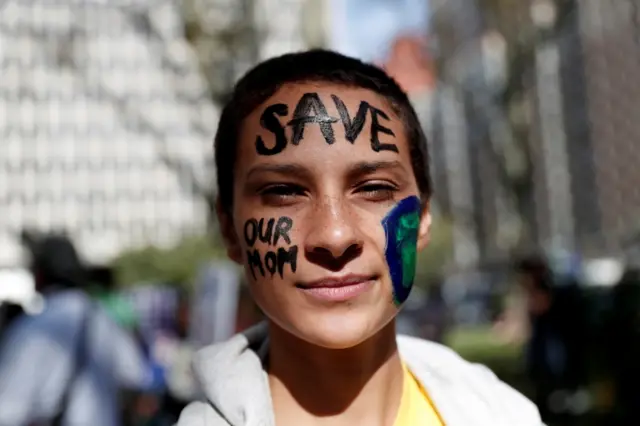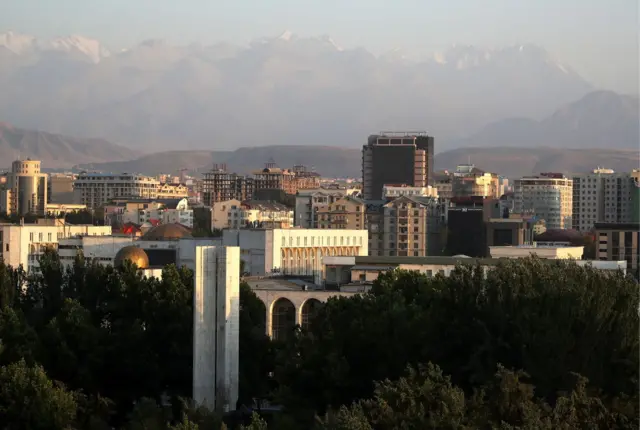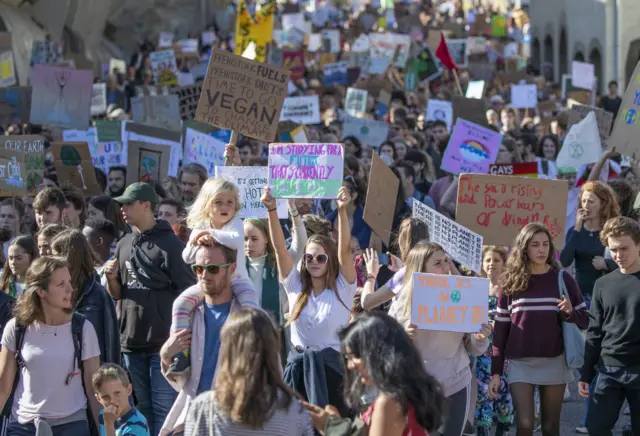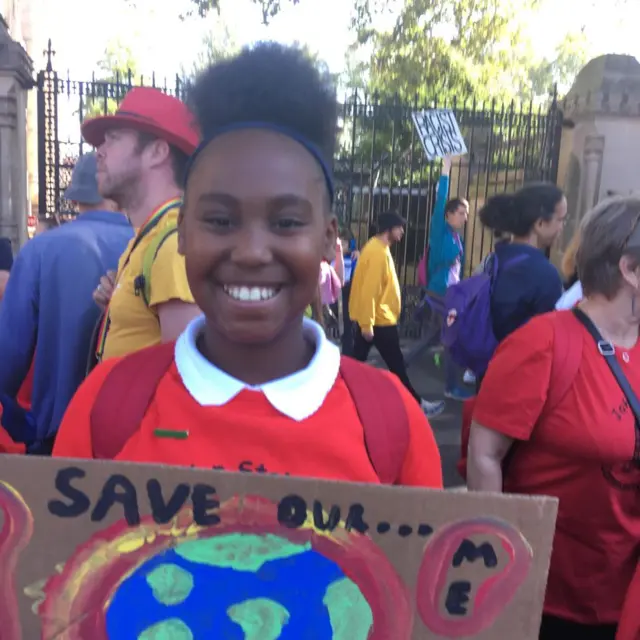How might a changing climate affect the US?published at 18:40 BST 20 September 2019
Holly Honderich
BBC News, Washington DC
America's future in a warming world depends a lot on what part of this vast country you're in. But broadly speaking, by the end of the century, it’s going to be warmer.
By 2050, the average daily max temperature might be 3F higher in San Francisco or Houston, and 4F higher in New York, according to the US Climate Resilience Toolkit, external.
That may not sound like much, but it’s the average over the entire year - including winters. And the pattern of increased temperatures is true almost everywhere.
The National Oceanic and Atmospheric Administration has a host of potentially dire projections: that by 2050, the risk of very large fires could be six times higher, external; that the risk of "rapidly intensifying hurricanes" could be higher along the east coast, external; that the south could have more summer dust storms, external and that "extreme" rainfall will be more likely, external, particularly in the north.
Some states are taking preventative action. California, for example, started planning responses to climate change in 2008 under Governor Arnold Schwarzenegger. And the threat of rising seas and increased flooding has led New York City to build a miles-long sea wall along the Staten Island coast to defend against the risks.
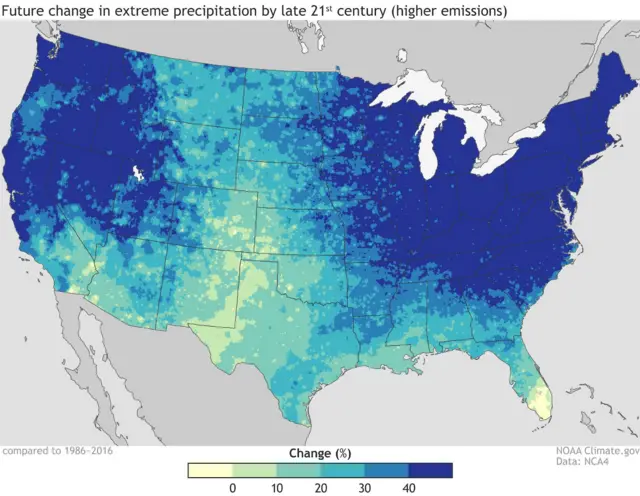 Image source, NOAA Climate.gov
Image source, NOAA Climate.gov








